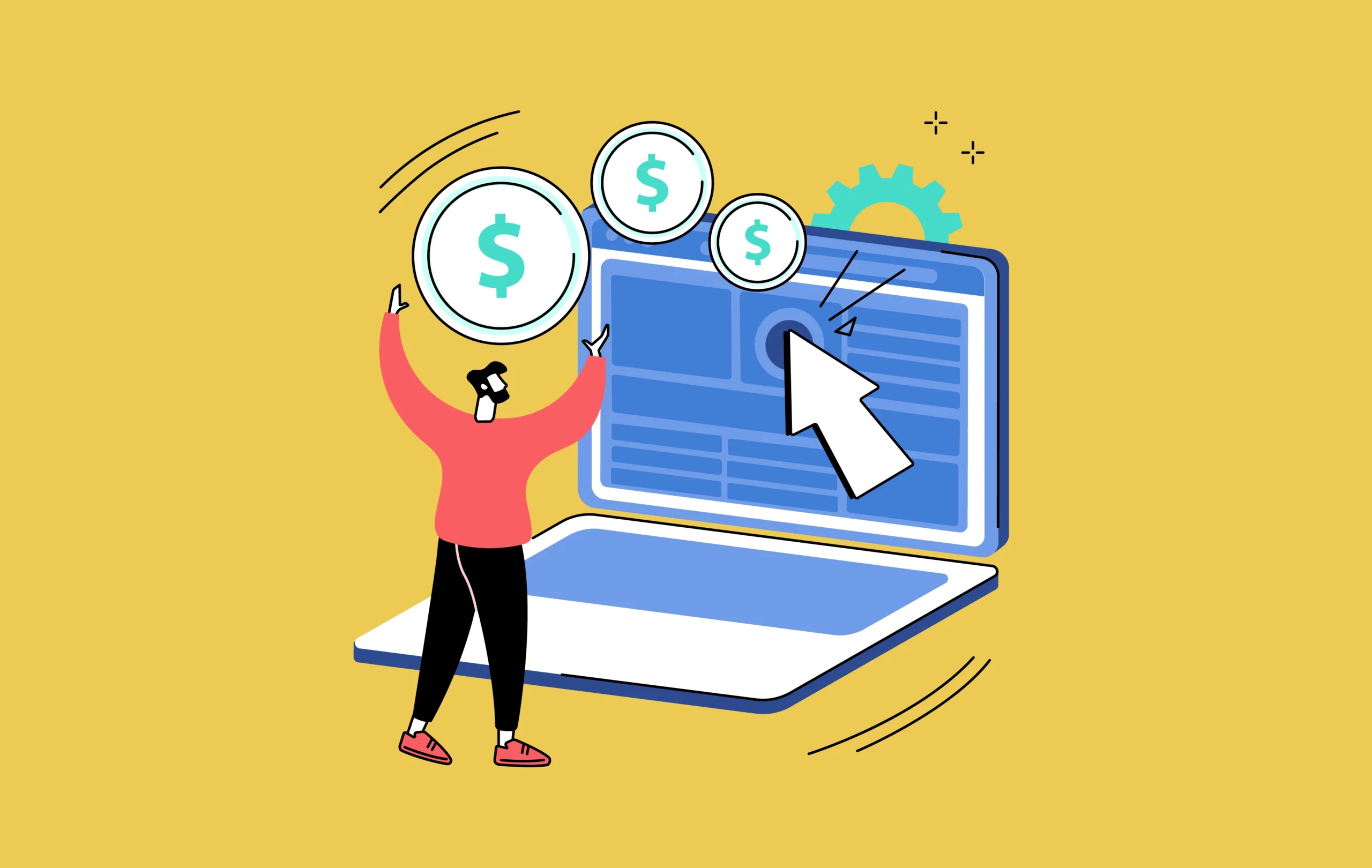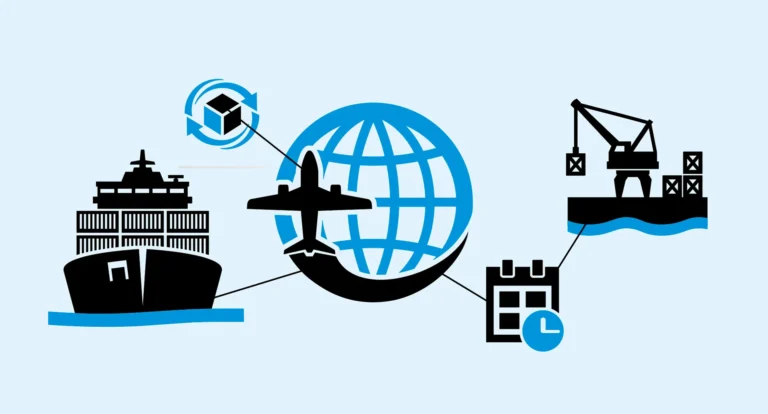How to Slash Your Costs Per Click and Boost Your ROI: Are you tired of spending a fortune on advertising, only to see your return on investment dwindle? If so, it’s time to take control of your marketing budget and slash those pesky costs per click (CPC). In this blog post, we’ll explore the ins and outs of CPC, why it matters for your business, and most importantly, how to reduce it while boosting your ROI. Get ready to dive into the world of cost-effective advertising strategies that will take your online presence to new heights! So buckle up and let’s get started on our quest to conquer the elusive low CPC!
Table of Contents
Understanding Cost Per Click (CPC)
In the vast realm of online advertising, one term that you’ll frequently come across is Cost Per Click (CPC). But what exactly does it mean? Simply put, CPC refers to the amount of money you pay each time a user clicks on your ad. It’s an essential metric for measuring the effectiveness and efficiency of your digital marketing efforts.
The Importance of a Low CPC
Why should you care about having a low CPC? Well, it directly impacts your return on investment (ROI). A high CPC means more money out of your pocket for each click, which can quickly drain your budget. On the other hand, a low CPC allows you to achieve better results without breaking the bank. By reducing your costs per click, you’ll have more funds available to invest in other areas or even scale up your campaigns.
Factors That Affect CPC
Several factors influence how much you pay per click. One key aspect is competition – if multiple advertisers are targeting the same keywords as you, it can drive up prices. The relevance and quality score of your ads also play a role; search engines like Google reward well-crafted and relevant ads with lower costs per click.
Strategies to Slash Your Costs Per Click
Now that we understand why aiming for a low CPC is crucial let’s dive into some strategies to help us achieve this goal:
A) Keyword Research and Targeting: Conduct thorough keyword research to identify less competitive but still relevant keywords that align with both user intent and business objectives.
B) Ad Quality and Relevance: Create compelling ad copy that resonates with users’ needs while ensuring relevancy between keywords, ad text, and landing page content.
C) Landing Page Optimization: Optimize landing pages by improving their loading speed, enhancing user experience design elements such as clear call-to-action buttons or forms placement.
D) Bidding Strategies: Experiment with different bidding strategies, such as manual bidding or automated bidding options provided by advertising platforms, to find
The Importance of a Low CPC
When it comes to online advertising, one metric that can greatly impact your success is Cost Per Click (CPC). Put simply, CPC refers to the amount you pay each time someone clicks on your ad. Why is this important? Well, a low CPC means you’re getting more bang for your buck – you’re able to reach more potential customers without breaking the bank.
By keeping your costs per click low, you can stretch your advertising budget further and maximize your return on investment (ROI). This is especially crucial for small businesses or those with limited marketing budgets. After all, who doesn’t want to get the most out of their advertising dollars?
A low CPC also allows you to be more competitive in the digital landscape. With lower costs per click, you have greater flexibility in bidding strategies and can potentially outperform competitors who are paying higher prices for their ads.
So how do you achieve a low CPC? It’s not just about luck; there are several factors that come into play. From keyword research and targeting to ad quality and relevance, every aspect of your campaign should be optimized for cost efficiency.
Additionally, landing page optimization is key. By creating highly relevant and engaging landing pages that align with your ad messaging, you increase the chances of conversion while lowering bounce rates – which ultimately impacts costs per click.
Don’t underestimate the power of strategic bidding strategies. Experimenting with different bid types such as manual bidding or automated bidding algorithms can help control costs and maximize results.
Maintaining a low CPC is essential if you want to make the most out of your online advertising efforts. By focusing on keyword targeting, optimizing ad quality and relevance as well as improving landing pages – along with strategic bidding strategies -you’ll be well-positioned to slash those costs per click while boosting ROI!
Factors That Affect CPC
When it comes to online advertising, understanding the factors that affect your Cost Per Click (CPC) is crucial. By gaining insight into these factors, you can make informed decisions to optimize your campaigns and decrease your costs.
One major factor that affects CPC is keyword competition. Highly competitive keywords tend to have higher CPCs because more advertisers are bidding on them. By conducting thorough keyword research and targeting less competitive keywords, you can save money on each click.
Another factor is ad quality and relevance. Search engines like Google measure the quality of ads based on their relevance to the search query and the landing page they lead to. Creating compelling and relevant ads with strong call-to-actions will not only improve your Quality Score but also lower your CPC.
Your landing page plays a significant role in determining your CPC as well. If users land on a poorly optimized or irrelevant landing page, they are more likely to leave without converting, resulting in wasted clicks and higher costs. Optimize your landing pages by ensuring they are user-friendly, fast-loading, and aligned with the ad message.
Bidding strategies also influence CPCs. Different bid types such as manual bidding or automated bidding algorithms can impact how much you pay per click. Experimenting with different bidding strategies can help you find the most cost-effective approach for your campaigns.
Understanding these factors that affect CPC will enable you to take strategic steps towards slashing costs per click while maximizing return on investment (ROI). Keep track of changes in performance metrics through comprehensive tracking tools so that adjustments can be made if necessary.
By conducting thorough keyword research, creating high-quality ads, optimizing landing pages effectively, experimenting with bidding strategies,and monitoring performance closely,you can slash costs per click while boosting ROI – ultimately helping achieve greater success with online advertising campaigns!
Strategies to Slash Your Costs Per Click
One of the most effective ways to lower your Cost Per Click (CPC) is by focusing on keyword research and targeting. Start by conducting thorough research to identify high-value keywords with low competition. This will allow you to bid on relevant keywords that are more likely to drive qualified traffic while keeping your costs down.
Another strategy is optimizing your ad quality and relevance. Create compelling, well-written ads that speak directly to your target audience’s needs and desires. Ensure that your ad copy aligns with the keywords you’re bidding on, as this improves relevancy and can lead to higher click-through rates.
Landing page optimization is crucial for reducing CPC as well. Design landing pages that provide a seamless user experience, load quickly, and offer valuable content or incentives related to the ad they clicked on. A positive landing page experience can improve Quality Score, leading to lower CPCs.
Implementing smart bidding strategies can also help slash your costs per click. Whether it’s manual bidding or automated bid management tools like Google Ads’ Smart Bidding feature, regularly monitor performance metrics such as conversion rates and adjust bids accordingly.
Remember, tracking and analyzing data is essential for optimizing campaign performance and maximizing ROI. Use analytics tools like Google Analytics or Facebook Pixel to gain insights into visitor behavior and conversion rates from different sources so you can make data-driven decisions.
By implementing these strategies consistently over time, you’ll be able to reduce your CPC significantly while boosting ROI—a win-win situation for any advertiser! So start implementing these tactics today—and watch those costs per click drop!
A. Keyword Research and Targeting
When it comes to slashing your costs per click (CPC) and boosting your return on investment (ROI), one of the most crucial steps is conducting thorough keyword research and targeting. This process involves identifying the keywords that are relevant to your business, products, or services and have a high search volume.
To begin, start by brainstorming a list of potential keywords that you think people might use when searching for what you offer. Then, utilize keyword research tools like Google Keyword Planner or SEMrush to expand your list and discover related keywords that you may not have thought of.
Once you have a comprehensive list of keywords, it’s important to analyze their competitiveness and search volume. Look for keywords with moderate competition but high search volume as they will typically result in lower CPCs.
Next, narrow down your keyword selection based on relevancy to ensure that the traffic generated from these keywords is highly targeted. Remember, it’s better to target fewer but more relevant keywords than casting a wide net with generic ones.
Continuously monitor and adjust your keyword strategy as market trends change over time. Regularly review performance metrics such as click-through rates (CTR), conversion rates, and cost metrics to identify opportunities for optimization.
By investing time into strategic keyword research and targeting, you can significantly reduce costs per click while driving qualified traffic to maximize your ROI.
B. Ad Quality and Relevance
When it comes to slashing your costs per click (CPC) and boosting your return on investment (ROI), one crucial factor to consider is the quality and relevance of your ads. Creating compelling and relevant ads not only attracts more clicks but can also lower your CPC.
To improve ad quality, start by focusing on creating clear and concise headlines that grab attention. Use powerful language or ask thought-provoking questions to engage viewers right from the start. Additionally, make sure that the body of your ad aligns with the headline, providing relevant information that entices users to take action.
Another essential aspect is ensuring that your ads are highly targeted. Tailor them specifically for different audience segments based on demographics, interests, or browsing behavior. By targeting specific groups instead of a broad audience, you increase the likelihood of capturing their interest and achieving higher conversion rates.
Furthermore, continuously monitor and optimize your ad campaigns for relevance. Regularly review keyword performance data to identify underperforming keywords or those driving up costs without delivering desired results. Consider removing irrelevant keywords while adding new ones based on actual user search queries.
Always strive for relevancy in both text-based ads as well as image-based display ads by using eye-catching visuals directly related to what you’re promoting. Remember that visual appeal plays a significant role in attracting attention amidst a sea of online content.
By focusing on ad quality and relevance throughout all stages of campaign creation, implementation, monitoring, and optimization, you can significantly impact both CPC reduction efforts as well as overall ROI improvement.
C. Landing Page Optimization
When it comes to slashing your costs per click (CPC) and boosting your ROI, landing page optimization plays a crucial role. Your landing page is the first impression that users get of your website after clicking on your ad, so it needs to be optimized for maximum relevance and engagement.
Ensure that your landing page is aligned with the keywords you are targeting in your ad campaign. This means using those keywords strategically in the headline, subheadings, and body copy of your landing page. The more relevant and closely matched your content is to what users are searching for, the higher chance you have of getting their attention and keeping them on your site.
Make sure that your landing page has clear calls-to-action (CTAs). These CTAs should guide users towards taking a desired action such as making a purchase or filling out a form. Use persuasive language and compelling visuals to entice visitors into converting.
In addition to optimizing the content on the landing page itself, don’t forget about its design and usability. Ensure that the layout is clean and easy to navigate, with fast loading times. A cluttered or confusing layout can lead to high bounce rates which negatively impact both CPCs and ROI.
Consider implementing A/B testing on different versions of your landing pages to see which performs best in terms of conversions. This will allow you to continually optimize and improve upon them over time.
By focusing on landing page optimization as part of an overall strategy for reducing CPCs, you can significantly increase the chances of improving conversion rates while lowering advertising costs.
D. Bidding Strategies
When it comes to slashing your costs per click (CPC) and boosting your return on investment (ROI), bidding strategies play a crucial role. The amount you bid for keywords in your pay-per-click (PPC) campaigns can greatly impact the cost-effectiveness of your ads.
One bidding strategy that can help you reduce CPC is the use of long-tail keywords. These are more specific and less competitive than generic terms, which means they often have lower CPCs. By targeting these niche keywords, you can attract more relevant traffic while keeping costs down.
Another effective strategy is setting bid adjustments based on device or time of day. Analyzing data from previous campaigns can reveal when and where your ads perform best. By adjusting bids accordingly, you can maximize visibility during peak times while minimizing spend during slower periods.
Consider using automated bidding tools offered by PPC platforms like Google Ads. These tools leverage machine learning algorithms to adjust bids in real-time based on various factors such as ad position and conversion likelihood.
Additionally, take advantage of ad scheduling options to control when your ads appear throughout the day or week. This allows you to focus budget allocation during high-converting hours or days, ultimately optimizing your ROI.
Implementing smart bidding strategies aligned with your campaign goals will not only help decrease CPC but also improve overall performance and make every dollar count!
Tracking and Analyzing Your ROI
Once you have implemented strategies to slash your costs per click, it’s crucial to track and analyze your return on investment (ROI). This step is often overlooked but can provide valuable insights into the effectiveness of your advertising campaigns.
One way to track your ROI is by utilizing conversion tracking. By setting up conversion tracking in platforms like Google Ads or Facebook Ads, you can monitor how many clicks result in desired actions such as purchases or sign-ups. This data allows you to determine which keywords, ads, or landing pages are generating the most conversions.
In addition to conversion tracking, it’s important to analyze other metrics that contribute to your overall ROI. Metrics like click-through rate (CTR), average session duration, bounce rate, and cost per acquisition (CPA) provide a holistic view of campaign performance.
By regularly analyzing these metrics and comparing them against your goals and benchmarks, you can identify areas for improvement and make informed decisions about where to allocate your ad budget. For example, if certain keywords have a high CPC but low conversion rates, it may be worth revisiting their relevance or adjusting bids accordingly.
Tracking and analyzing your ROI allows you to optimize future campaigns based on data-driven insights rather than guesswork. It ensures that every dollar spent on advertising is working towards achieving maximum returns for your business.
Remember that optimizing CPC involves an ongoing process of testing new strategies while monitoring results closely. By consistently refining keyword targeting, improving ad quality and relevance score,
optimizing landing page experience,
and implementing smart bidding strategies,
you’ll be well-equipped
to slash costs per click
and boost the return on investment
of each advertising dollar.
So start applying these tactics today!
Tips for Maintaining a Low CPC
Once you’ve implemented strategies to slash your costs per click and boost your ROI, it’s important to continue optimizing and maintaining a low CPC. Here are some tips to help you stay on track:
- Regularly monitor and update your keyword list: Keep an eye on the performance of your keywords and remove any that are not driving results or are too expensive. Continuously research new relevant keywords to expand your reach.
- Refine your ad targeting: Analyze the data from your campaigns and adjust your targeting settings accordingly. Focus on reaching the right audience at the right time with specific demographics, interests, or locations.
- Improve ad quality score: Enhance the relevance and quality of your ads by using targeted keywords in headlines, descriptions, and display URLs. Ensure that each ad group is tightly themed with focused messaging.
- Optimize landing pages: Make sure that the landing pages you direct users to after clicking on ads align with their intent and provide valuable content or offers. Test different layouts, design elements, and call-to-action buttons to improve conversion rates.
- Implement bidding adjustments: Adjust bids based on performance data such as device type, location, time of day/week, or demographic segments. Experiment with bid modifiers to optimize for better-performing audiences.
6.Track conversions accurately: Install conversion tracking codes properly so you can measure success against specific goals like purchases or sign-ups accurately.
7.Regularly analyze campaign metrics: Monitor key metrics like click-through rate (CTR), cost per acquisition (CPA), bounce rate etc., identify trends or patterns in user behavior,and make data-driven decisions based on those insights.
8.Stay updated with industry trends: Be aware of changes in algorithms,policies,and best practices related to cost per click advertising platforms like Google Ads.
This will help you adapt quickly,gain a competitive edge,and make informed decisions about budget allocation,bidding strategies,and targeting options.
Conclusion : How to Slash Your Costs Per Click and Boost Your ROI
By understanding and implementing strategies to slash your costs per click, you can boost your ROI and make the most of your advertising budget. Keeping a low CPC is crucial for achieving successful online advertising campaigns.
Start by conducting thorough keyword research and targeting the right audience. By choosing relevant keywords with lower competition, you can drive more targeted traffic to your ads while keeping costs down.
Ensure that your ads are of high quality and relevance to improve their performance and decrease CPC. A well-crafted ad that aligns with user intent will not only attract more clicks but also result in higher conversion rates.
Optimizing your landing pages is another essential factor in reducing CPC. Make sure that they are user-friendly, load quickly, and provide valuable information or offers. A seamless user experience will lead to better engagement and ultimately lower costs.
Implementing effective bidding strategies is also vital for controlling costs per click. Experiment with different bidding options such as manual bids or automated bid strategies to find the optimal approach for maximizing ROI within budget constraints.
Additionally, track and analyze your ROI regularly using analytics tools such as Google Analytics or other platforms provided by advertising networks. This data will help you identify areas where improvements can be made to further reduce CPC while increasing conversions.
To maintain a low cost per click over time, continuously monitor performance metrics, adjust bids accordingly, test new ad variations, optimize landing pages based on user feedback, and stay up-to-date with industry trends.
In conclusion (note: avoid starting this section with “In conclusion”), slashing your costs per click requires diligent research, optimization efforts across various aspects of your campaign – from keyword selection to ad quality – as well as ongoing analysis of results. By following these strategies consistently, you’ll not only save money but also achieve better results in terms of return on investment.







